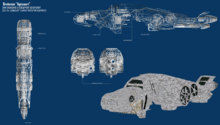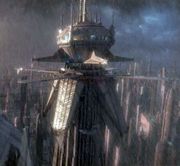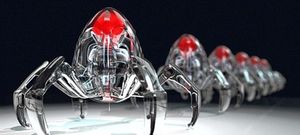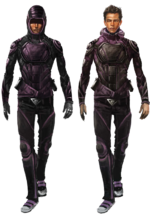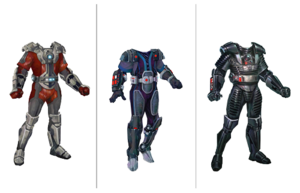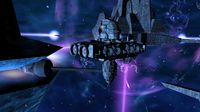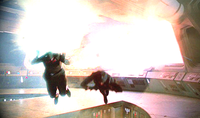
|
This wiki is closed in favour of the new wiki. Information shown is likely to be very out of date. |
Difference between revisions of "Sir Firmus Piett"
(Status information - current and former.) |
|||
| (201 intermediate revisions by 2 users not shown) | |||
| Line 1: | Line 1: | ||
| − | {{ | + | {{Character Infobox |
| − | | name = <small> | + | | name = <small>Former MOD and Former FA of BAF</small><br />Baron Firmus Piett aka Lord of Jarrow<br /> |
| − | | image = | + | | image = pr1.jpg |
| − | | imagesize = | + | | imagesize = 300px |
| caption = | | caption = | ||
| origin = {{House Link | Bretonia}} | | origin = {{House Link | Bretonia}} | ||
| − | | birth_date = June 6, 782 [[A.S.]], [[Planet | + | | birth_date = June 6, 782 [[A.S.]], [[Planet New London]] |
| gender = Male | | gender = Male | ||
| − | | occupation = | + | | occupation = Noble, House of Lords |
| affiliation = [[Bretonia Armed Forces]] | | affiliation = [[Bretonia Armed Forces]] | ||
| service_what = Service Time | | service_what = Service Time | ||
| − | | service_time = | + | | service_time = 120 months |
| − | | rank = | + | | rank = Honorary Admiral |
| status = Active (819A.S.) | | status = Active (819A.S.) | ||
| death_date = | | death_date = | ||
}} | }} | ||
{{PTOC}} | {{PTOC}} | ||
| − | '''Firmus Piett''', born on June 6th, 782 [[A.S.]] on [[Planet New London]], | + | '''Firmus Piett''', born on June 6th, 782 [[A.S.]] on [[Planet New London]], was Admiral of the Bretonia Armed Forces. He joined the royal navy at the rank of Lieutenant and quickly reached the rank of Commodore after ten months of service. He was appointed as commander of the [[2nd Fleet]], with Headquarters [[Planet Leeds]], and [[7th Fleet]], with HQ [[Battleship Derby]]. Several months later was redirected as commander of the [[12th]] West Fleet with HQ [[Battleship Stirling]] and was given the charge of [[Dundee]] and [[Edinburgh]] systems. Due to his experience and excellent service in the name of the Queen, was appointed Fleet Admiral and Supreme Commander of Bretonia Defense Fleets. During the Fall of Leeds, the early appointed Minister of Defense - Sir Piett, have prepared a plan to save most of the people in Leeds by retreating any forces before the advancing of the Gallic fleets. The success of the operation aside from the loss of the system was noted by Her Royal Majesty for his efforts to save her people were above all else. For his duty and services, the Queen has bestowed upon him a peerage, as Lord of Jarrow on New London. An year later due to his further assistance in protecting Bretonia, the Queen made him Baron and welcomed him as honorable member of the bretonian elite and part of her royal court. |
| + | |||
| + | Former Minister of Defense of House Bretonia. Currently is acting as founder of "The Noble Families" initiative with goals to combine all nobles in Bretonia and assist rebuilding the House from within. | ||
| − | ==Background== | + | |
| + | ==I. Background== | ||
===Early Independent career=== | ===Early Independent career=== | ||
| − | Piett began his naval career, serving with the antipirate fleet. Piett was forced to work in the native sector of [[Dublin]] system on board of his [[Bretonia Gunboat]]. That was and continue to be one of the most dangerous sectors, and any attempts to bring an order is | + | Piett began his naval career, serving with the antipirate fleet. Piett was forced to work in the native sector of [[Dublin]] system on board of his [[Bretonia Gunboat]]. That was and continue to be one of the most dangerous sectors, and any attempts to bring an order is associated with heavy opposition. The enemies in this sector are many, from independent pirates and mollies to dangerous corsairs and wilders. Despite this, Piett soon was given command of the antipirate fleet. It was then renamed in to Bretonia Royal Fleet, consisted of several fighters and bombers, four gunboats, tree destroyers and two battleships. Piett's record with the fleet was flawless, and he made a tremendous amount of "arrests and suppressions." The Bretonia Royal Fleet numbers continue to increase. It had seven battleships, five destroyers as well as other small escort crafts. In time the fleet was spread all over [[Bretonia]] space in order to secure the safty of its sovereign. Soon enough, Piett's reputation reached the Admiralty board of the [[Bretonia Armed Forces]], as he received various commendations. |
===Late Independent career=== | ===Late Independent career=== | ||
| − | [[Image:RS1.jpg|right|thumb| | + | [[Image:RS1.jpg|right|thumb|250px|Firmus Piett on board of HMS [[Royal Sovereign]] with part of the Leeds Defense Fleet near [[Planet Leeds]].]] |
| − | Firmus Piett continue to serve with the Independent Bretonia Royal Fleet, on board of their flagship [[ | + | Firmus Piett continue to serve with the Independent Bretonia Royal Fleet, on board of their flagship HMS [[Royal Sovereign]]. With an extraordinary number of arrests and suppressions to his name, as well as what appeared to be a perfectly clean record, Piett earned the attention of the high-ranked officers from the Admiralty board. In the late stages of his career, Piett proved himself an excellent captain of the bretonian dunkirks as well as good tactician. After many battles, where he increased his abilities to command, he received the permission to join the [[Bretonia Armed Forces]] with the rank of Lieutenant. Nevertheless the Piett's flagship continue to be part of the Bretonian Royal Fleet while it's captain slowly but progressively was building his reputation in the ranks of the [[Bretonia Armed Forces]]. |
| − | |||
===Officer of the Armed Forces=== | ===Officer of the Armed Forces=== | ||
In his first months, as Lieutenant from the armed forces, Firmus Piett took part of multiple missions and operations. He continue to work in [[Dublin]] sector which was the Hell Hole of [[Bretonia]]. The molly and gaian attacks were something normal that happened every day. The corsair fleets were moving in to [[Dublin]] too and shooting everything which is not on their side. The Dublin Campaign was dangerous but it helped the young Lieutenant to create a cease of the situation and to impact with the problems, in this remote world, in person. Slowly the campaign of the antipirate fleet in [[Dublin]] reached its end. All ships were spread across [[Bretonia]] space and [[Dublin]] was let in the hands of the primary fleet of the [[ Bretonia Armed Forces]]. Nevertheless few ships from BRF can still be noticed in some sectors of [[Bretonia]] doing their best to secure the peace. | In his first months, as Lieutenant from the armed forces, Firmus Piett took part of multiple missions and operations. He continue to work in [[Dublin]] sector which was the Hell Hole of [[Bretonia]]. The molly and gaian attacks were something normal that happened every day. The corsair fleets were moving in to [[Dublin]] too and shooting everything which is not on their side. The Dublin Campaign was dangerous but it helped the young Lieutenant to create a cease of the situation and to impact with the problems, in this remote world, in person. Slowly the campaign of the antipirate fleet in [[Dublin]] reached its end. All ships were spread across [[Bretonia]] space and [[Dublin]] was let in the hands of the primary fleet of the [[ Bretonia Armed Forces]]. Nevertheless few ships from BRF can still be noticed in some sectors of [[Bretonia]] doing their best to secure the peace. | ||
| + | Firmus Piett took part at the signing of the Omega Treaty between [[Rheinland]] and [[Bretonia]], which happened in [[Cambridge]] system. He was in charge of the capital ships, protecting the sector, commanding them from HMS [[Royal Sovereign]]. The operation was threatened by a small corsair bomber squad and several fighters. With the combined powers of the [[Rheinland Military]] and [[Bretonia Armed Forces]], the corsairs were easily dealt with. Later in [[Omega-3]] system, more corsairs arrived but this time with some capital escort vessels, trying desperately to reach [[Cambridge]] system and to bring chaos in the diplomatic event. Capital ships and escort vessels separated from the primary fleet and moved to [[Omega-3]]. Several minutes later the corsair plague come to an end. The Treaty was signed and our guests were escorted back to their borders. | ||
| + | |||
| + | [[Image:RS2.jpg|left|thumb|250px|Commander Firmus Piett on board of HMS [[Royal Sovereign]] in defense formation around Bowex)The White Cliffs.]] | ||
| + | |||
| + | Months after these encounters Firmus Piett reached the rank of Commander and took part in to an Economic event. The Bowex company ordered a massive mining operation in [[Cambridge]] system, where [[Bretonia Armed Forces]] had to take part as heavy escort support. Several battleships as well as two destroyers and multiple fighters were sent to accompany one of the largest ships in [[Sirius]], the [[Barge]]. The mission was simple, five [[Hegemon]] class ships and several small mining drones had to mine over 40 000 cargo of the precious [[Beryllium Ore]]. Due to the increased security of the system, as well as the traps that were placed to counter possible corsair attacks, the event ended as planned and [[Bretonia]] received hundreds millions of credits. | ||
| + | |||
| + | |||
| + | ===Knight of Bretonia=== | ||
| + | [[Image:RS3.jpg|right|thumb|250px|Captain Firmus Piett assaulting Yukawa Shipyard with several bombers and fighters in [[Honshu]].]] | ||
| + | One of the most dangerous operation of the armed forces was the attack on Yukawa Shipyard. [[Bretonia Armed Forces]] had information of possible transfer of more than 20 000 prisoners of war deep in to Kusari space. These men had to be saved at all cost and returned back to [[Bretonia]]. The main operation was separated in tree parts to reduce the chances of [[Kusari Naval Forces]] to notice the true meaning of the attack. | ||
| + | Captain Piett was the squad leader of the assault on the Yukawa Shipyard. This station was the only one that could produce the deadly [[Kusari Destroyer]] class vessels. It had to be at least damaged enough to reduce the production of these ships for weeks and hopefully for months. A small squad of [[Templar]] fighters were escorted from members of the Queen Carina's Privateers through secret holes in to the unknown space. Hours later all tree squads were in right positions and the operation started. | ||
| + | The [[Kusari Naval Forces]] defense consisted of destroyer and gunboat patrols. Later they were reinforced by unknown enemy, an experimental kusari destroyer armed with unknown weapons. Admiral Fraser, the leader of the entire operation, sacrificed it's flagship, the [[HMS-Degobaz]], to help the remaining forces to finish the experimental ship. Members from the [[Convoy]] had contacted the armed forces pilots, informing them that the prisoners of war are back home. Later the remaining fighters had to retreat back to [[Bretonia]] and celebrate the victory they had achived. With minor losses and several hours later, the strike team was in orbit of [[ Planet Leeds]]. | ||
| + | |||
| + | In this day, admiral Fraser awarded captain Firmus Piett with the title to become a Knight Commander of the Order of the Bretonian Empire, the highest of them titles, for his operation that helped the 20 000 prisoners of war sent to dead, to be saved and returned home. | ||
| + | |||
| + | ===Member of the Admiralty Board=== | ||
| + | [[Image:RS9.jpg|left|thumb|190px|Commodore Sir Firmus Piett receives the promotion message on board of HMS-[[Royal Sovereign]].]] | ||
| + | At 3th september, 819 [[A.S.]] , Sir Piett received a message from the fleet admiral of the armed forces, Sir James Ralston, that his hardworking service led to his promotion as an admiral and member of the honored admiralty board of [[Bretonia]]. Later this days, during the ceremony on board of [[Battleship Stirling]], the fleet admiral himself arrived to appoint his new collegue and untrust him with his new responsible position. Sir Piett was moved from his old position as Commander of the Leeds Defense fleet in to charge of [[Edinburgh]] and [[Dundee]] systems with Headquarters, [[Battleship Stirling]]. His flagship, HMS-[[Royal Sovereign]], was then moved to support Stirling's fleet at [[Dundee]]. It can be seen today, fighting neverending waves of kusari invaders, trying desperately to breach the Bretonia West borders. | ||
| + | |||
| + | - Months later Piett found himself buried with work. His job was to keep the peace in the west borders of [[Bretonia]] but the reports about corsair problematic encounters in the east borders as well as never ending Kusari invaders from north - [[Leeds]], placed Piett on a crossroad. He double checked the west borders defense plans, which he created, and they proved to keep the level of security on high alert. His presence on board of [[Battleship Stirling]] was not daily required that is why he appointed an assistant. Her name was [[Natasi Daala]] a bretonian officer, semi scientist. Her job was to stay on Stirling and receive the incoming transmissions from both enemies and friendlies. Her skills about the medicine and the ways to heal the wounded crew members and pilots were more than welcome, considering that [[Dunblane Station]] was far away from [[Battleship Stirling]]. In some critical situations where medical interference was necessary Daala was there to help as quickly as possible. | ||
| + | |||
| + | - In time [[Natasi Daala]] increased her knowledge in the medicine and wanted to begin a research on the nanotechnology. All she wanted was to work in a high tech secured laboratory from where she could keep researching the unknown misteries of the nano world. Admiral Piett found a suitable place for her needs on a small island in [[Planet New London]] where an old medical center was working to save the lives of many critically injured people. | ||
| + | |||
| + | - Admiral Piett was working for a month in the [[Southampton Shipyard]] finishing his project "Reincarnation". The project consisted of two tasks. First one was to support the BMM workers which salvaged metal parts from the debris field near the shipyard. The second task was to order the building of the two new ships for the armed forces, the prison liner [[HMP-Glasshause]] and the royal liner [[HMRS-Britannia]]. These ships had to replace their older predecessors for the next five decades. Once the project was finished, fleet admiral [[Sir James Ralston]] awarded Piett with the '''National Service Medal''' for his substantial financial donations to the war effort. | ||
| + | |||
| + | - Several months later, the LD-14 station was captured by the kusari naval forces. After a quick surprise attack, a small kusari assault team attacked the station which was found without the protection of [[Battleship York]]. The fleet admiral of the armed forces, [[Sir James Ralston]], ordered the operation "Attrition" which main goal was to recapture the base by sending multiple separated heavy squadrons in all north directions. After few days of endless fighting more than thousand snubs and few dozens of capital escort ships, the LD-14's affiliation was restored under the armed forces flag. All members participating in this operation were rewarded for their courage and efforts. Admiral Piett was awarded with Distinguished Flying Cross, for his exceptional piloting ability. | ||
| + | |||
| + | - After the successful experiments with the cloaking technology for the military suits in the [[Surgical Reconstruction Center]], Admiral Piett begun a project to implement the cloaking generators in to ships. Weeks after the start of the procject, several small and outdated ships of FOL class were ready for stealth missions in the atmosphere of the planet [[New London]]. The project was a success and the admiral was given rights to participate and lead the improvement of the stelth technology systems in a distant and hidden space installation. Any further information remains highly classified. | ||
| + | |||
| + | - Several weeks later, Bowex started the building of the bretonian merchant base [[King's Cross Station]]. Admiral Piett was in charge of the defense fleet around the station and ordered to do his best to protect the vulnerable installation at all cost until the shield generator is online. After few hours the base shield was raised and fully operational to repel a possible raid against the newly constructed station. Right now the [[King's Cross Station]] is one of the largest merchant dockyard and trading port for Ore commodities in the vicinity of New London as well as one of the most protected. | ||
| − | + | ===Minister of Defense=== | |
| + | [[Image:blueprints.png|left|thumb|220px|The blueprints of project "Agincourt".]] After his appointment as Minister of Defense, Sir Piett have begun to booster the defenses of Leeds as much as possible. Nevertheless, he was not realizing that his efforts were in vain. During a secret meeting between admirals from Liberty Navy, Bretonia Armed Forces and the Queen Herself with a mysterious new ally, things have changed beyond the border of understanding. Information about this meeting remains highly classified but it was noted that Her Majesty gave freedom to Sir Piett, to act as he wishes in order to do what must be done. | ||
| + | - In respond to these events the most trusted allies to Bretonia and the War Cabinet were sure about one thing - Leeds was going to fall...soon. Sir Piett had to form an escape plan for most of his men as well as those that remain on the stations in the vicinity and the planet. It was impossible to save all but better to save many than lose them all after a swift heavy strike - expected from Gallic Royal Navy forces. | ||
| + | - Sir Piett have ordered fullback to most of the forces in the vicinity of Leeds, by leaving York and Derby fleets to slow down the enemies near the gates which they were primary set to protect. A special plan to protect New London from the invasion was also put in effect. It was approved and signed by the Queen herself, to destroy both jump gates leading to New London and Newcastle. In this way Gallic forces would be locked in an empty system, with nearly no resources to plunder and a planet - fortified since the days of the war with Kusari. Slowing down the Gallics in Leeds would allow Liberty to prepare their western fleets for a massive strike or a bold defense if Gallic forces dared to enter Manchester or Magellan systems via the secret jump holes located in Leeds. | ||
| − | + | - After the Fall of Leeds, Sir Piett was bestowed a peerage, as Lord of Jarrow on New London for his services and efforts to protect the people of Bretonia. The battle in Leeds was lost but the war was still going on and Bretonia had to strike back. Lord Jarrow has ordered a Guerrilla Warfare for all armed forces. Gallics were in the system for the first time while bretonians were here for centuries. Secret passages and smuggling paths were formed in order to continue the supply of the troops in planet Leeds. Through secret jump holes the Armed Forces were able to strike with the element of surprise and confuse the enemy, wave after wave without giving them rest. Nevertheless the operations were a success for a time being but the bulk of the Gallic forces that later came to the system rendered the small guerrilla attacks as meaningless. At this stage the smugglers delivering supplies to the planet also diminished their daily routines. | |
| − | |||
| + | [[Image:Sts1.png|left|thumb|300px|The improved [[Southampton Shipyard]].]] | ||
| + | - Lord Jarrow have gathered his most trusted men and proposed his plan "Agincourt". The "hammer" of Bretonia, the one that struck hell upon the Kusari warships and later proved effective against the mighty Valors was the [[Challenger]] bomber. Nevertheless it was proven ineffective to launch bombing runs from a far, for these vessels were vulnerable to the swift and modern gallic fighter squadrons. That is why project "Agincourt" was about building a new ship that could carry these mighty bombers directly on the field, from where they would be able to tare apart the Valors easily. The project was taken with doubt due to the fact Bretonia had very limited resources. Nevertheless, Bowex company have managed to open once again the trading lines between Bretonia and Rheinland and a rush for resources, alloys, engine components and ablative armors begun. Liberty, Bretonia primary ally, have increased significantly the materials they were originally delivering. The new allies in the face of the Council have assisted with smuggling important and rare goods, which would only boost the building process of the ships by using the unknown technology of Gallia. BMM companies have established new beryllium mining operations from where more resources and credits came from. The Merchant Navy, also known as Convoy, assisted the Liberty delivery companies by further increasing the deliveries and the trade runs they've done per week. | ||
| + | [[Image:Bretcarr.png|right|thumb|350px|HMS-Venerable, the first bretonian carrier in front of [[Southampton Shipyard]].]] | ||
| + | - Bretonia has pressed hard beyond its limits. The whole House was working as one whole. Lord Jarrow has ordered [[Southampton Shipyard]] to be improved and reconstructed in order to supply more ship building operations. Additional three more drydocks were added next to its original three. Two small refining material facilities were established to further booster the refining of the raw metals. In result - gunboats and destroyers were build in bulk every week. The fighter and bomber factories at New London and planet Cambridge were "spitting" Paladins, Templars and Challengers in mass. The people of Bretonia would fight still they die if the worst scenario was realized - New London to be assaulted. The moral of the people were boosted by the presence of hundreds of ships patrolling the vicinity, trading vessels bringing new materials everyday, BBC news informing the people of each success, allies brining forces - there was Hope and in most cases Hope is all we need in order to bring ourselves on the line and fight for the greater good and for freedom. | ||
| − | + | - The first prototype of project "Agincourt" was build significantly early than expected. The ship builders have begun to adjust its weak spots and by combining all their knowledge about the ships they've build for centuries - to further improve the prototype and bring it on the same technological level like Kusari and Gallia have done for their ships long ago. After some time the first three ships were build, featuring significant cargo capabilities, three fighter hangars, one huge bomber hangar for frontal attacks and strong ablative armor. The ships were massive comparing them with the dunkirk battleships and their capabilities to carry dozens of auxiliary vessels made them an excellent command ships and mobile HQ. History will tell if these ships are going to turn the tides of the war but for now the moral of the bretonian population remains strong and assured - that victory will soon smile upon the righteous people. | |
| − | |||
| − | |||
| − | |||
| − | |||
| − | |||
| − | ==The Charger of the Knight== | + | ==II. The Charger of the Knight== |
| − | [[Image:RS4.jpg| | + | [[Image:RS4.jpg|right|thumb|200px|Captain Sir Firmus Piett overlooking a space battle.]] |
When Piett first joined the [[Bretonia Armed Forces]], he couldnt hide his discontent from the [[Templar]] ship. It was too heavy for him and yet not as powerful as the rumors said. It's hull was created from the strongest of all alloys and that high bonus to the ship, was it's main weakness, reducing its maneverability at the level of a small but fast freighter. | When Piett first joined the [[Bretonia Armed Forces]], he couldnt hide his discontent from the [[Templar]] ship. It was too heavy for him and yet not as powerful as the rumors said. It's hull was created from the strongest of all alloys and that high bonus to the ship, was it's main weakness, reducing its maneverability at the level of a small but fast freighter. | ||
| − | After many training sessions with the best members of the armed forces, observing multiple fighter battles even while on board of [[ | + | After many training sessions with the best members of the armed forces, observing multiple fighter battles even while on board of HMS [[Royal Sovereign]], Piett started to test the abilities of this, from first look bad fighter, at max. He ordered the engineers of [[Southampton Shipyard]] to modify his own fighter and make it more maneverable than other [[Templar]] ships. After many days of hardwork, the engineers had menaged to give what the captain wanted. |
| + | |||
| + | The next improvment was to upgrade the guns of the ship, by making them fire at slow rate but providing more damage than the normal bretonia splitters, which had quick fire rate but doing moderate ammout of damage. | ||
| + | The experimental [[Mini Razor]] guns that many jumped to use as primary gun, were not the kind of a weapon he wanted. His tactical thought pointed at the Disruptors. To control the battlefield by activating the mines whenever he wanted, to stop the fleeing and possibly cruising capital ships were stratigically superior from his point of view, than using a gun that requires patience and time to land a proper hit. The Mini Razor can't stop a battleship to cruise to a base or friendly ship. Mini Razor may do damge and win a duel but that was not the way to win a battle where a single Cruise Disruptor may decide the end of the encounter. | ||
| + | Many tests were made and Piett was finaly in one with his ship, just like the Knight is one with his battle charger. | ||
| + | |||
| + | |||
| + | |||
| + | |||
| + | ==III. Trainer in the renewed Queen Carina's Academy== | ||
| + | [[Image:RS5.jpg|left|thumb|120px|The Mark of the Queen Carina's Royal Academy.]] | ||
| + | After many months doing his duty, serving [[Bretonia]] with all his pation, Sir Piett was promoted to the rank of Commodore and appointed as recruiting officer. That is why his first act was to increase the value of the recruiting programs, by re-open the Queen Carina's Academy. These actions led to the inviting of new wave of pilots. Three cadets signed in the first day and weeks later, over nineteen. Tree of them stoped their education for their own reasons, but approximately of fourteen cadets that left, did their best to finish their combat training and join the ranks of the [[Bretonia Armed Forces]]. | ||
| + | |||
| + | The academy was let by [[Sir Firmus Piett]] and commodore O'Dukes aka [[Lord Hamilton]]. They both were leading two different classes. Sir Piett took part in teaching the new cadets the ways of the templar, combat hours, while commodore O'Dukes took part in diplomatic hours. To ensure the classes are understandable to the cadets, [[Lord Hamilton]] writed a book of his own "QCA Diplomatic Manual". | ||
| + | |||
| + | Queen Carina's Academy is open even now and is working hard to ensure the recruits, or formally the cadets, are ready for the dangerous missions in the future of their career as military pilots and knights of Her Royal Majesty [[Queen Carina]] I. | ||
| + | |||
| + | |||
| + | |||
| + | |||
| + | |||
| + | |||
| + | |||
| + | |||
| + | ==IV. Military Scientist from SRC== | ||
| + | ===The Decision=== | ||
| + | [[Image:MedRC1.jpg|right|thumb|300px|The Surgical Reconstruction Center on planet [[New London]].]] | ||
| + | On board of [[Battleship Stirling]] the daily job of admiral Piett was to secure the system by sending multiple squadrons to scout the area until enemies were found. When the job was done well Piett left the deck and moved straight to the medical laboratory of the dunkirk. There his assistent [[Natasi Daala]] was working to save the lifes of the damaged pilots. The admiral was watching her every move and quickly started to be fasinated from the medicine. He requested from Daala to present in every surgery made on board of the ship so he can observe and learn. Days later he made Daala the primary medical officer of the west fleets. | ||
| + | |||
| + | When Daala requested to be transfered to more secured place from where she could concentrate on her work and research, Piett felt a burst of feelings - confusion and understanding. He was attracted from Daala and the science, that is why he had to do a move. He decided to join the Surgical Reconstruction Center on planet [[New London]] where he could improve his knoweldge of the medicine and the nano world. In time Piett's interests of the nanotechnologies changed slowly from medical to military orientation. Few months later Sir Piett was leading several projects inside the SRC, some of which were considered as '''Highly Classified'''. | ||
| + | |||
| + | ===The SRC=== | ||
| + | [[Image:MedRC2.jpg|left|thumb|180px|"The Sage Tower"]] | ||
| + | The Surgical Reconstruction Center, aka SRC, is located on a small island in planet [[New London]]. It consist of five structures: '''Scientist Quarters''', '''Intensive Treatment''', '''Surgery Wing''', '''Research Wing''' and '''"The Sage Tower"'''. Together they form the surgical center. | ||
| + | |||
| + | |||
| + | -[[The Scientist Quarters]] consist of multiple skyscrapers-like buildings where the scientists can live a normal and healthy life. The Quarters were build close to the main building in order to increase the scientist's speed of work and to help them act quickly in critical and emergency situations. | ||
| + | |||
| + | -[[The Intensive Treatment]] is one building consisting of many cells and small laboratories for high level of treatment. Usually in this wing are sent people with mental illness, mental disorder, nervous attacks or critically injured. The last reports from SRC proves that by using the newest methods of treatment as well as nano cell fixing proceedures, there is 80% chance that people send to the Intensive Wing will be restored to normal for a moderate ammout of time. | ||
| + | |||
| + | -[[The Surgery Wing]] is the building next to the Intensive Treatment. It consist of more than hundred surgery rooms as well as thousands of Healing Pods. The Healing pods were glass globe-like objects 2 metres wide and high. Together they form "The Hive", a place where thousands can be healed at the same time. The last reports of SRC proves that the new nano serums, used by The Hive healing pods, can restore a medium damaged crew of a Dunkirk for less than 2 days. The Critical injured, depending on the level of damage, may be healed for less than week. If there is a huge risk for their lifes the people were sent directly to the intensive wing, where the period necessary for recovery is unknown. | ||
| + | |||
| + | -[[The Research Wing]] is the primary building of the medical complex. It have a castle-like structure and is located in the middle of the complex. It is linked with the Intensive, Surgery and Scientist's Wings. It consist of multiple research laboratories equiped with the best and most expensive technology available. The primary goal of this Wing is to increase the healing proceedures by reducing the time necessary for a person to be restored completely. That can be achieved by researching new serums and knowledge about the nano world. | ||
| + | |||
| + | -[["The Sage Tower"]] is hid in plain sight with large windows that seemed to show that there was nothing to hide. It featured four landing pads for emergency cases near the top of the structure. The interior was lined with ultra-dense walls of neuranium shielding to conceal any radiation leak from the building's reactor. Surrounding this shielding was an exterior shell of durasteel built with armor of a lanthanide and dual super alloy. Any further information about this structure is considered as '''Classified'''. | ||
| + | |||
| + | ===Nano Engineering=== | ||
| + | [[Image:Nan13.jpg|left|thumb|300px|Updated progress of the medical nano parts, from cell level to multi-purpose nanobots.]] | ||
| + | Nano engineerng provides education of the nanoworld as well as creation of many multi-purpose nano robots. Cell repair is using the same tasks that living systems already prove possible. Access to cells is possible because scientists can insert needles into cells without killing them. Thus, molecular machines are capable of entering the cell. Also, all specific biochemical interactions show that molecular systems can recognize other molecules by touch, build or rebuild every molecule in a cell, and can disassemble damaged molecules. Finally, cells that replicate prove that molecular systems can assemble every system found in a cell. The SRC scinetists worked hard to build nanomachines based systems that are able to enter cells, sense differences from healthy ones and make modifications to the structure. These nano machines are general part of the healing serums used by "The Hive's" healing pods. | ||
| + | The nano serums "evolved" from molecular-cell level to multi-purpose nano robots. | ||
| + | |||
| + | |||
| + | -[[Experimental Nano-Cell (Manual Control)]] The first nano-cells were specialized. They open and close cell membranes or travel through tissue and enter cells and viruses. These machines are only able to correct a single molecular disorder like DNA damage or enzyme deficiency. | ||
| + | |||
| + | -[[Experimental Nano-Bot (Manual Control)]] The medical Nano-bots can perform a variety of similarly miraculous functions, from eating away dead flesh at a wound site to actually re-growing tissue so that it heals cleanly and quickly without leaving a nasty scar. Some patients even have difficulties with festering wounds, which could be easily cleared up by an efficient medical nano-bots. These robots are guided manually by the scientist and are not yet fully upgraded. | ||
| + | |||
| + | -[[Experimental Nano-Bot (AI Control)]] These cell repair machines are programmed with more abilities with the help of advanced AI systems. They are direct machines to examine, take apart, and rebuild damaged molecular structures. Repair machines are able to repair whole cells by working structure by structure. Then by working cell by cell and tissue by tissue, whole organs can be repaired. Finally, by working organ by organ, health is restored to the body. Cells damaged to the point of inactivity can be repaired because of the ability of molecular machines to build cells from scratch. | ||
| + | |||
| + | |||
| + | ===Nano Protection Technologies=== | ||
| + | [[Image:Nanosuit1.png|right|thumb|150px|NanoSuits: NPT-V1 (right) and NPT-V2 (left).]] | ||
| + | A powered exoskeleton, also known as powered armor, or exoframe, is a powered mobile machine consisting primarily of an exoskeleton-like framework worn by a person and a power supply that supplies at least part of the activation-energy for limb movement.Initial exoskeleton experiments are commonly done using inexpensive and easy to mold materials such as steel and aluminum. However steel is heavy and the powered exoskeleton must work harder to overcome its own weight in order to assist the wearer, reducing efficiency. Aluminum is lightweight but also a brittle metal; it would be unacceptable for the exoskeleton to fail catastrophically in a high-load condition by "folding up" on itself and injuring the wearer. | ||
| + | |||
| + | As the design moves past the initial exploratory steps, the engineers move to progressively more expensive and strong but lightweight materials such as titanium, and use more complex component construction methods, such as molded carbon-fiber plates. | ||
| + | |||
| + | So far there are several prototypes constructed by the scientists of SRC in the [[The Research Wing]]. The nanosuits are capable of accelerating the processes of the human body like regeneration and healing. There are rumors of few prototypes construced for the [[Bretonia Armed Forces]] but their purpose and capabilities are yet unknown. | ||
| + | |||
| + | |||
| + | - [[NPT-V1]] was the first nanosuit constructed in the SRC. The wearer is able to inhale oxygen in larger quantities, and an injection of Nano-bots enter their bloodstream. The Nano-Bots hyper-accelerate the blood flow throughout the body, stimulating muscles in order to increase the regeneration of the cell and the speed of the entire healing process. It's purprose was to ensure the healing acceleration of all critically injured patients. | ||
| + | |||
| + | - [[NPT-V2]] is the latest and yet experimental nanosuit of the SRC. When activated, the Nanosuit alters its outer surface through the use of a crystalline generation, capable of refracting incoming spectrums like Visible Light, Microwave (radar), and Radio to render itself completely invisible to the naked eye and most surveillance equipment. Interestingly, the suit's cloak renders the weapon the user is weilding invisible as well, though how exactly it does this is kept in secret. | ||
| + | |||
| + | [[Image:Nanoarmors.png|left|thumb|300px|NanoArmors: NPT-V5 (left), NPT-V8 (middle), NPT-VX (right).]] | ||
| + | |||
| + | The weight of the current heavy marine assault armor was following the bretonian ideology of "armor above all" which resulted in their first creation as super armors suitable for super heavy assault marines. The opposite ideology of the current infiltrator armor, "speed above all" led to the creation of weak armored suits, suitable for all agents, infiltrators, snipers, vehicle crew members and pilots. The bretonia commandos were using protoype armors and high-tech weapons for maximum survivability, which was the factor that led to the creation of balanced armor suits, suitable for any situation. After the successful tests of the prototype NPT-V2 suit, the scientists of the [[SRC]] began looking for an improvement to the standart bretonian marine, infiltrator and comando's armors. The general idea of the improvement was to increase the armor strenght, maneuverability and survivability of all armor types. | ||
| + | |||
| + | - [[NPT-V5]] A prototype marine armor. The weight was reduced by removing armor plates from the suit, which results in speed acceleration at the cost of armor strenght. In order to improve the loss of the survivability, the scientists gave the suit wearer heightened defenses to withstand any impacts for a short duration by installing small shield generator placed on the back of the armor. The number of these protoype armors already created is approximately eight dozens. Any further information is classified. | ||
| + | |||
| + | - [[NPT-V8]] A prototype infiltrator armor. That kind of armor is mainly used by the bretonia royal sniper team and the special agents from the MI5. The armor causes the wearer to run and act at extremely fast speeds. Additionally, the suits contain a cloaking element from NPT-V2 to make the user near-invisible. The number of these prototype armors already created is approximately two dozens. Any further information is classified. | ||
| + | |||
| + | - [[NPT-VX]] A protoype..<span style="color:red;">..Downloading information...error...missing files..</span>.. Any further information is classified. | ||
| + | |||
| + | |||
| + | |||
| + | |||
| + | ==V. Fall== | ||
| + | ===Project Abyss=== | ||
| + | [[Image:Sunderland.jpg|right|thumb|200px|Sunderland Research Station, where project "Abyss" was started.]] | ||
| + | With the Gallic invasion pressing deeper and deeper everyday the Admiralty board of the Armed Forces begun to use every tactic in their disposal, every new equipment available even some considered as prototypes. The success of the cloaking technology increased the efficiency of the remaining Dunkirks in the bretonian fleet by turning them from light battleships that kept distance in to tools for destruction in close range. Nevertheless, rumors spread that the other Houses begun the research on the wormhole technology leading to the construction of the jump drives. They could create a wormhole to move a ship, or ships, between any two points in space in an immeasurable small ammout of time. | ||
| + | |||
| + | Bretonia was not in suitable situation to begin a huge research operation and construction of these jump drives. Still, a very small sector of the Armed Forces, lead by the fleet admiral [[Firmus Piett]], were working on a secret project with codename "Abyss". The team's primary mission was to turn the jump drive from a tool of transportation in to a weapon. With the knowledge gathered from [[Sunderland Research Station]] and the data about the wormholes collected during the years, the project begun with success. The Jump Drives in their nature could create a small wormhole that could suck all nearby ships in to the tunel and send them somewhere else - usually at a very well calculated sector of the space. Their advantages were found to be their primary weakness, in terms of turning this tool in to a weapon. What could happen if an entire gallic fleet was transported from Leeds in to the unknown just because they were in range of a skeletal crew Dunkirk with a Prototype Jump Drive? Or perhaps directly in to the Nomad worlds? All that was an opportunity worth of trying. | ||
| + | |||
| + | ===The Incident=== | ||
| + | [[Image:Pf4.png|left|thumb|200px|Fleet Admiral Firmus Piett and his flag officer witness the explosion.]] | ||
| + | Friday, 23rd 819 [[A.S.]], [[Salisbury]] system. After many weeks of hardworking efforts, the team of "Abyss" was ready to set up a test jump with few hundred drones mounted on several dozens of outdated ships. They were in formation with a very old bretonian warship, one of the remaining dunkirk MK1 prototypes since 200 years. The ship was a scrap but the energy generator was replaced with a new one, suitable to bring power to the Protoype Jump Drive. | ||
| + | The test mission was simple - activate the jump drive, create the tunel and teleport all the test ships from their current location in Salisbury in to the unknown. After that the team should have tracked any signals they could gather from the drones and calculate their possible position. The results were expected to be simple as well - no signal to be gathered which would only mean the drones are in the unknown and definitey wont be coming back. | ||
| + | |||
| + | As predicted, something went wrong during the activation of the prototype jump drive. The unstable nomad power cell, used to fuel even further the capabilities of this invention, created a chain reaction with the energy generator of the dunkirk MK1 - leading to a tremendous explosion, obliterating the entire formation of the skeletal crew ships and some of the "Abyss" team. | ||
| + | In this moment the fleet admiral was observing the failure of the experiment from the [[Prison Liner]] used for this operation. All crew members were ordered to retreat to the escape pods but the blast wave reached the liner before all pilots were able to escape. In these probably last moments admiral [[Piett]] sent a quick message to [[New London]] with their exact location and need of help. Then he attempted to flee to the bridge emergency escape pod but the blast wave struck the liner and cut it in two. Panic, pain and chaos were the last moments on board of the liner. | ||
| + | |||
| + | |||
| + | ==VI. Rise== | ||
| + | ===Arrival=== | ||
| + | [[Image:Pf2.png|left|thumb|230px|The medical shuttle containing the fleet admiral, docking on [["The Sage Tower"]], with an escort.]] | ||
| + | [[Natasi Daala]], director of the SRC has received the message containing the location of the officers that were in serious danger. An emergency medical team was formed instantly and sent to recover the possible survivors of the incident. | ||
| + | Half an hour later the medical liner and several other small ships, used for such operations, were in position and begun to search for survivors. Only 9 escape pods were salvaged from the small debris field. The total count of the people found in the pods was 33. Those that were found were sent immediately at the sickbay and procedures to save their lifes were started. | ||
| + | |||
| + | In the hangar bay of the liner, where most pods were carefully placed, the medical team was informed about the arrival of one more. They were shocked to find out the pod was containing 2 survivors, one of which was the fleet admiral himself. How these people were able to enter the pod and yet to receive so much injuries remains unknown but immediate healing procedures were required in order to save the lifes of both of them. | ||
| + | |||
| + | [[Natasi Daala]] personally lead the team that begun the temporarry operation on admiral [[Piett]] on board of the medical liner, which was on its way back to the capital. Minutes later the liner was in orbit of [[Planet New London]]. A medical shuttle, escorted by two [[Templar]] very heavy fighters, landed on the isle where The Surgical Reconstruction Center was located. | ||
| + | Because of the high level of injuries on the Piett's body and her fear to loose him, Daala ordered the admiral to be transported to [["The Sage Tower"]], where most of the newest medical inventions were about to be used in order to prevent his death. | ||
| + | |||
| + | ===Rebuilding=== | ||
| + | [[Image:Pf1.png|right|thumb|280px|Record from the security camera taken during the operation at [["The Sage Tower"]].]] | ||
| + | What was the real purpose of [["The Sage Tower"]] remains highly classified. Nevertheless most of the scientists of SRC knew that the newest medical inventions and all prototype suits, build from the [["Nano Protection Technologies"]], were located there under heavy security. The final inventions were used in order to save the life of the fleet admiral, which was still in danger. | ||
| + | During the first hours of the operation, most of the Piett's damaged organs were replaced and his multiple injuries - healed. Sadly his torso was covered with many burned areas which were unable to be fixed. The epidermis primary cells were damaged beyond repair. At this stage, the medical team had to inject several hundred [[Experimental Nano-Bot (AI Control)]] in his blood stream. These nano-bots were using an advanced AI systems with ability to build cells from scratch. They had to significantly increase the regeneration rate on the standart organic cells and to fix Piett's current and possible future wounds more faster. | ||
| + | |||
| + | [[Image:Pr2.jpg|left|thumb|300px|The renewed Fleet Admiral, discussing the possibilities of the NPT-VX with a chief researcher.]] | ||
| + | After these procedures Piett's life was no more in danger. The team then concentrated on fixing the problem with his lungs, which lead to the future unavailability for a normal breathing. In order to succeed, Daala gave permission one of the prototype suits [[NPT-VX]] to be taken for the next operation. This suit was the last model of the [["Nano Protection Technologies"]] project. It had multiple additional equipments: durasteel armor plates - for maximum protection against weapon fire bolts and electricity, life support systems, nanobot injectors - with multiple types for different situations as well as small cloaking generator, mounted on his back - similar to a pillar behind his neck. The helmet was most important for it could allow him to breathe, thanks to the modern life support systems, and to communicate via several devices. Overall this suit was considered to be a masterpiece of the combined modern technology and medicine of 819(A.S.) | ||
| + | |||
| + | The whole operation took six hours to be complete. [[Natasi Daala]] and her team have achieved great results - to "reincarnate" a half dead man for a minimum ammout of time. Because of their success, Admiral Piett awarded the 'SRC' by investing more credits in their projects, which possibly in future could save the lifes of not one but many. | ||
| + | |||
| + | |||
| + | |||
| + | |||
| + | |||
| + | |||
| + | ==VII. Awards and Titles== | ||
| + | |||
| + | 1.Distinguished Service Cross | ||
| + | |||
| + | [[Image:BAF-DSC.jpg]] | ||
| + | *Awarded to Armed Forces personnel for extraordinary service in non-combat roles. | ||
| + | |||
| + | |||
| + | 2.Knight Commander of the Order of the Bretonian Empire | ||
| + | |||
| + | [[Image:BAF-KBE.jpg]] | ||
| + | *Highest National Honor, awarded by the Queen for extraordinary personal service to Bretonia. Confers upon the holder the honorific "Sir" to be recognized by all Bretonian citizens. | ||
| + | |||
| + | |||
| + | 3.National Service Medal | ||
| + | |||
| + | [[Image:BAF-NSM.jpg]] | ||
| + | *Awarded to Armed Forces or Bretonian Police personnel or Bretonian citizens who make substantial financial donations to the war effort. | ||
| + | |||
| + | |||
| + | 4.Veteran's Badge | ||
| + | |||
| + | [[Image:BAF-VB.jpg]] | ||
| + | *Awarded to Armed Forces Personnel who have served for over 18 months. | ||
| + | |||
| + | |||
| + | 5.Distinguished Flying Cross | ||
| + | |||
| + | [[Image:BAF-DFC.jpg]] | ||
| + | *Awarded to Armed Forces personnel for exceptional piloting ability. | ||
Latest revision as of 18:29, 29 January 2023
| Former MOD and Former FA of BAF Baron Firmus Piett aka Lord of Jarrow | |
Error creating thumbnail: Unable to save thumbnail to destination | |
| Profile | |
| Origin | |
| Occupation | Noble, House of Lords |
| Gender | Male |
| Affiliation | Bretonia Armed Forces |
| Service Time | 120 months |
| Rank | Honorary Admiral |
| Status | Active (819A.S.) |
| Born | June 6, 782 A.S., Planet New London |
Firmus Piett, born on June 6th, 782 A.S. on Planet New London, was Admiral of the Bretonia Armed Forces. He joined the royal navy at the rank of Lieutenant and quickly reached the rank of Commodore after ten months of service. He was appointed as commander of the 2nd Fleet, with Headquarters Planet Leeds, and 7th Fleet, with HQ Battleship Derby. Several months later was redirected as commander of the 12th West Fleet with HQ Battleship Stirling and was given the charge of Dundee and Edinburgh systems. Due to his experience and excellent service in the name of the Queen, was appointed Fleet Admiral and Supreme Commander of Bretonia Defense Fleets. During the Fall of Leeds, the early appointed Minister of Defense - Sir Piett, have prepared a plan to save most of the people in Leeds by retreating any forces before the advancing of the Gallic fleets. The success of the operation aside from the loss of the system was noted by Her Royal Majesty for his efforts to save her people were above all else. For his duty and services, the Queen has bestowed upon him a peerage, as Lord of Jarrow on New London. An year later due to his further assistance in protecting Bretonia, the Queen made him Baron and welcomed him as honorable member of the bretonian elite and part of her royal court.
Former Minister of Defense of House Bretonia. Currently is acting as founder of "The Noble Families" initiative with goals to combine all nobles in Bretonia and assist rebuilding the House from within.
I. Background
Early Independent career
Piett began his naval career, serving with the antipirate fleet. Piett was forced to work in the native sector of Dublin system on board of his Bretonia Gunboat. That was and continue to be one of the most dangerous sectors, and any attempts to bring an order is associated with heavy opposition. The enemies in this sector are many, from independent pirates and mollies to dangerous corsairs and wilders. Despite this, Piett soon was given command of the antipirate fleet. It was then renamed in to Bretonia Royal Fleet, consisted of several fighters and bombers, four gunboats, tree destroyers and two battleships. Piett's record with the fleet was flawless, and he made a tremendous amount of "arrests and suppressions." The Bretonia Royal Fleet numbers continue to increase. It had seven battleships, five destroyers as well as other small escort crafts. In time the fleet was spread all over Bretonia space in order to secure the safty of its sovereign. Soon enough, Piett's reputation reached the Admiralty board of the Bretonia Armed Forces, as he received various commendations.
Late Independent career
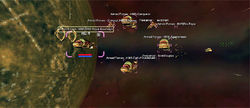
Firmus Piett continue to serve with the Independent Bretonia Royal Fleet, on board of their flagship HMS Royal Sovereign. With an extraordinary number of arrests and suppressions to his name, as well as what appeared to be a perfectly clean record, Piett earned the attention of the high-ranked officers from the Admiralty board. In the late stages of his career, Piett proved himself an excellent captain of the bretonian dunkirks as well as good tactician. After many battles, where he increased his abilities to command, he received the permission to join the Bretonia Armed Forces with the rank of Lieutenant. Nevertheless the Piett's flagship continue to be part of the Bretonian Royal Fleet while it's captain slowly but progressively was building his reputation in the ranks of the Bretonia Armed Forces.
Officer of the Armed Forces
In his first months, as Lieutenant from the armed forces, Firmus Piett took part of multiple missions and operations. He continue to work in Dublin sector which was the Hell Hole of Bretonia. The molly and gaian attacks were something normal that happened every day. The corsair fleets were moving in to Dublin too and shooting everything which is not on their side. The Dublin Campaign was dangerous but it helped the young Lieutenant to create a cease of the situation and to impact with the problems, in this remote world, in person. Slowly the campaign of the antipirate fleet in Dublin reached its end. All ships were spread across Bretonia space and Dublin was let in the hands of the primary fleet of the Bretonia Armed Forces. Nevertheless few ships from BRF can still be noticed in some sectors of Bretonia doing their best to secure the peace.
Firmus Piett took part at the signing of the Omega Treaty between Rheinland and Bretonia, which happened in Cambridge system. He was in charge of the capital ships, protecting the sector, commanding them from HMS Royal Sovereign. The operation was threatened by a small corsair bomber squad and several fighters. With the combined powers of the Rheinland Military and Bretonia Armed Forces, the corsairs were easily dealt with. Later in Omega-3 system, more corsairs arrived but this time with some capital escort vessels, trying desperately to reach Cambridge system and to bring chaos in the diplomatic event. Capital ships and escort vessels separated from the primary fleet and moved to Omega-3. Several minutes later the corsair plague come to an end. The Treaty was signed and our guests were escorted back to their borders.
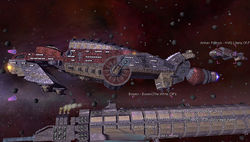
Months after these encounters Firmus Piett reached the rank of Commander and took part in to an Economic event. The Bowex company ordered a massive mining operation in Cambridge system, where Bretonia Armed Forces had to take part as heavy escort support. Several battleships as well as two destroyers and multiple fighters were sent to accompany one of the largest ships in Sirius, the Barge. The mission was simple, five Hegemon class ships and several small mining drones had to mine over 40 000 cargo of the precious Beryllium Ore. Due to the increased security of the system, as well as the traps that were placed to counter possible corsair attacks, the event ended as planned and Bretonia received hundreds millions of credits.
Knight of Bretonia
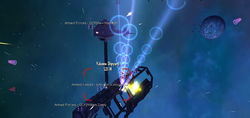
One of the most dangerous operation of the armed forces was the attack on Yukawa Shipyard. Bretonia Armed Forces had information of possible transfer of more than 20 000 prisoners of war deep in to Kusari space. These men had to be saved at all cost and returned back to Bretonia. The main operation was separated in tree parts to reduce the chances of Kusari Naval Forces to notice the true meaning of the attack. Captain Piett was the squad leader of the assault on the Yukawa Shipyard. This station was the only one that could produce the deadly Kusari Destroyer class vessels. It had to be at least damaged enough to reduce the production of these ships for weeks and hopefully for months. A small squad of Templar fighters were escorted from members of the Queen Carina's Privateers through secret holes in to the unknown space. Hours later all tree squads were in right positions and the operation started. The Kusari Naval Forces defense consisted of destroyer and gunboat patrols. Later they were reinforced by unknown enemy, an experimental kusari destroyer armed with unknown weapons. Admiral Fraser, the leader of the entire operation, sacrificed it's flagship, the HMS-Degobaz, to help the remaining forces to finish the experimental ship. Members from the Convoy had contacted the armed forces pilots, informing them that the prisoners of war are back home. Later the remaining fighters had to retreat back to Bretonia and celebrate the victory they had achived. With minor losses and several hours later, the strike team was in orbit of Planet Leeds.
In this day, admiral Fraser awarded captain Firmus Piett with the title to become a Knight Commander of the Order of the Bretonian Empire, the highest of them titles, for his operation that helped the 20 000 prisoners of war sent to dead, to be saved and returned home.
Member of the Admiralty Board

At 3th september, 819 A.S. , Sir Piett received a message from the fleet admiral of the armed forces, Sir James Ralston, that his hardworking service led to his promotion as an admiral and member of the honored admiralty board of Bretonia. Later this days, during the ceremony on board of Battleship Stirling, the fleet admiral himself arrived to appoint his new collegue and untrust him with his new responsible position. Sir Piett was moved from his old position as Commander of the Leeds Defense fleet in to charge of Edinburgh and Dundee systems with Headquarters, Battleship Stirling. His flagship, HMS-Royal Sovereign, was then moved to support Stirling's fleet at Dundee. It can be seen today, fighting neverending waves of kusari invaders, trying desperately to breach the Bretonia West borders.
- Months later Piett found himself buried with work. His job was to keep the peace in the west borders of Bretonia but the reports about corsair problematic encounters in the east borders as well as never ending Kusari invaders from north - Leeds, placed Piett on a crossroad. He double checked the west borders defense plans, which he created, and they proved to keep the level of security on high alert. His presence on board of Battleship Stirling was not daily required that is why he appointed an assistant. Her name was Natasi Daala a bretonian officer, semi scientist. Her job was to stay on Stirling and receive the incoming transmissions from both enemies and friendlies. Her skills about the medicine and the ways to heal the wounded crew members and pilots were more than welcome, considering that Dunblane Station was far away from Battleship Stirling. In some critical situations where medical interference was necessary Daala was there to help as quickly as possible.
- In time Natasi Daala increased her knowledge in the medicine and wanted to begin a research on the nanotechnology. All she wanted was to work in a high tech secured laboratory from where she could keep researching the unknown misteries of the nano world. Admiral Piett found a suitable place for her needs on a small island in Planet New London where an old medical center was working to save the lives of many critically injured people.
- Admiral Piett was working for a month in the Southampton Shipyard finishing his project "Reincarnation". The project consisted of two tasks. First one was to support the BMM workers which salvaged metal parts from the debris field near the shipyard. The second task was to order the building of the two new ships for the armed forces, the prison liner HMP-Glasshause and the royal liner HMRS-Britannia. These ships had to replace their older predecessors for the next five decades. Once the project was finished, fleet admiral Sir James Ralston awarded Piett with the National Service Medal for his substantial financial donations to the war effort.
- Several months later, the LD-14 station was captured by the kusari naval forces. After a quick surprise attack, a small kusari assault team attacked the station which was found without the protection of Battleship York. The fleet admiral of the armed forces, Sir James Ralston, ordered the operation "Attrition" which main goal was to recapture the base by sending multiple separated heavy squadrons in all north directions. After few days of endless fighting more than thousand snubs and few dozens of capital escort ships, the LD-14's affiliation was restored under the armed forces flag. All members participating in this operation were rewarded for their courage and efforts. Admiral Piett was awarded with Distinguished Flying Cross, for his exceptional piloting ability.
- After the successful experiments with the cloaking technology for the military suits in the Surgical Reconstruction Center, Admiral Piett begun a project to implement the cloaking generators in to ships. Weeks after the start of the procject, several small and outdated ships of FOL class were ready for stealth missions in the atmosphere of the planet New London. The project was a success and the admiral was given rights to participate and lead the improvement of the stelth technology systems in a distant and hidden space installation. Any further information remains highly classified.
- Several weeks later, Bowex started the building of the bretonian merchant base King's Cross Station. Admiral Piett was in charge of the defense fleet around the station and ordered to do his best to protect the vulnerable installation at all cost until the shield generator is online. After few hours the base shield was raised and fully operational to repel a possible raid against the newly constructed station. Right now the King's Cross Station is one of the largest merchant dockyard and trading port for Ore commodities in the vicinity of New London as well as one of the most protected.
Minister of Defense
After his appointment as Minister of Defense, Sir Piett have begun to booster the defenses of Leeds as much as possible. Nevertheless, he was not realizing that his efforts were in vain. During a secret meeting between admirals from Liberty Navy, Bretonia Armed Forces and the Queen Herself with a mysterious new ally, things have changed beyond the border of understanding. Information about this meeting remains highly classified but it was noted that Her Majesty gave freedom to Sir Piett, to act as he wishes in order to do what must be done.
- In respond to these events the most trusted allies to Bretonia and the War Cabinet were sure about one thing - Leeds was going to fall...soon. Sir Piett had to form an escape plan for most of his men as well as those that remain on the stations in the vicinity and the planet. It was impossible to save all but better to save many than lose them all after a swift heavy strike - expected from Gallic Royal Navy forces.
- Sir Piett have ordered fullback to most of the forces in the vicinity of Leeds, by leaving York and Derby fleets to slow down the enemies near the gates which they were primary set to protect. A special plan to protect New London from the invasion was also put in effect. It was approved and signed by the Queen herself, to destroy both jump gates leading to New London and Newcastle. In this way Gallic forces would be locked in an empty system, with nearly no resources to plunder and a planet - fortified since the days of the war with Kusari. Slowing down the Gallics in Leeds would allow Liberty to prepare their western fleets for a massive strike or a bold defense if Gallic forces dared to enter Manchester or Magellan systems via the secret jump holes located in Leeds.
- After the Fall of Leeds, Sir Piett was bestowed a peerage, as Lord of Jarrow on New London for his services and efforts to protect the people of Bretonia. The battle in Leeds was lost but the war was still going on and Bretonia had to strike back. Lord Jarrow has ordered a Guerrilla Warfare for all armed forces. Gallics were in the system for the first time while bretonians were here for centuries. Secret passages and smuggling paths were formed in order to continue the supply of the troops in planet Leeds. Through secret jump holes the Armed Forces were able to strike with the element of surprise and confuse the enemy, wave after wave without giving them rest. Nevertheless the operations were a success for a time being but the bulk of the Gallic forces that later came to the system rendered the small guerrilla attacks as meaningless. At this stage the smugglers delivering supplies to the planet also diminished their daily routines.
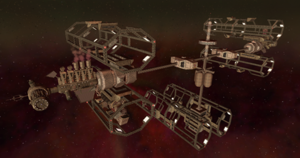
- Lord Jarrow have gathered his most trusted men and proposed his plan "Agincourt". The "hammer" of Bretonia, the one that struck hell upon the Kusari warships and later proved effective against the mighty Valors was the Challenger bomber. Nevertheless it was proven ineffective to launch bombing runs from a far, for these vessels were vulnerable to the swift and modern gallic fighter squadrons. That is why project "Agincourt" was about building a new ship that could carry these mighty bombers directly on the field, from where they would be able to tare apart the Valors easily. The project was taken with doubt due to the fact Bretonia had very limited resources. Nevertheless, Bowex company have managed to open once again the trading lines between Bretonia and Rheinland and a rush for resources, alloys, engine components and ablative armors begun. Liberty, Bretonia primary ally, have increased significantly the materials they were originally delivering. The new allies in the face of the Council have assisted with smuggling important and rare goods, which would only boost the building process of the ships by using the unknown technology of Gallia. BMM companies have established new beryllium mining operations from where more resources and credits came from. The Merchant Navy, also known as Convoy, assisted the Liberty delivery companies by further increasing the deliveries and the trade runs they've done per week.
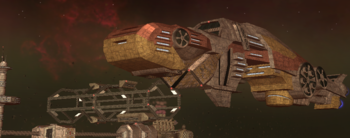
- Bretonia has pressed hard beyond its limits. The whole House was working as one whole. Lord Jarrow has ordered Southampton Shipyard to be improved and reconstructed in order to supply more ship building operations. Additional three more drydocks were added next to its original three. Two small refining material facilities were established to further booster the refining of the raw metals. In result - gunboats and destroyers were build in bulk every week. The fighter and bomber factories at New London and planet Cambridge were "spitting" Paladins, Templars and Challengers in mass. The people of Bretonia would fight still they die if the worst scenario was realized - New London to be assaulted. The moral of the people were boosted by the presence of hundreds of ships patrolling the vicinity, trading vessels bringing new materials everyday, BBC news informing the people of each success, allies brining forces - there was Hope and in most cases Hope is all we need in order to bring ourselves on the line and fight for the greater good and for freedom.
- The first prototype of project "Agincourt" was build significantly early than expected. The ship builders have begun to adjust its weak spots and by combining all their knowledge about the ships they've build for centuries - to further improve the prototype and bring it on the same technological level like Kusari and Gallia have done for their ships long ago. After some time the first three ships were build, featuring significant cargo capabilities, three fighter hangars, one huge bomber hangar for frontal attacks and strong ablative armor. The ships were massive comparing them with the dunkirk battleships and their capabilities to carry dozens of auxiliary vessels made them an excellent command ships and mobile HQ. History will tell if these ships are going to turn the tides of the war but for now the moral of the bretonian population remains strong and assured - that victory will soon smile upon the righteous people.
II. The Charger of the Knight
When Piett first joined the Bretonia Armed Forces, he couldnt hide his discontent from the Templar ship. It was too heavy for him and yet not as powerful as the rumors said. It's hull was created from the strongest of all alloys and that high bonus to the ship, was it's main weakness, reducing its maneverability at the level of a small but fast freighter. After many training sessions with the best members of the armed forces, observing multiple fighter battles even while on board of HMS Royal Sovereign, Piett started to test the abilities of this, from first look bad fighter, at max. He ordered the engineers of Southampton Shipyard to modify his own fighter and make it more maneverable than other Templar ships. After many days of hardwork, the engineers had menaged to give what the captain wanted.
The next improvment was to upgrade the guns of the ship, by making them fire at slow rate but providing more damage than the normal bretonia splitters, which had quick fire rate but doing moderate ammout of damage. The experimental Mini Razor guns that many jumped to use as primary gun, were not the kind of a weapon he wanted. His tactical thought pointed at the Disruptors. To control the battlefield by activating the mines whenever he wanted, to stop the fleeing and possibly cruising capital ships were stratigically superior from his point of view, than using a gun that requires patience and time to land a proper hit. The Mini Razor can't stop a battleship to cruise to a base or friendly ship. Mini Razor may do damge and win a duel but that was not the way to win a battle where a single Cruise Disruptor may decide the end of the encounter. Many tests were made and Piett was finaly in one with his ship, just like the Knight is one with his battle charger.
III. Trainer in the renewed Queen Carina's Academy
After many months doing his duty, serving Bretonia with all his pation, Sir Piett was promoted to the rank of Commodore and appointed as recruiting officer. That is why his first act was to increase the value of the recruiting programs, by re-open the Queen Carina's Academy. These actions led to the inviting of new wave of pilots. Three cadets signed in the first day and weeks later, over nineteen. Tree of them stoped their education for their own reasons, but approximately of fourteen cadets that left, did their best to finish their combat training and join the ranks of the Bretonia Armed Forces.
The academy was let by Sir Firmus Piett and commodore O'Dukes aka Lord Hamilton. They both were leading two different classes. Sir Piett took part in teaching the new cadets the ways of the templar, combat hours, while commodore O'Dukes took part in diplomatic hours. To ensure the classes are understandable to the cadets, Lord Hamilton writed a book of his own "QCA Diplomatic Manual".
Queen Carina's Academy is open even now and is working hard to ensure the recruits, or formally the cadets, are ready for the dangerous missions in the future of their career as military pilots and knights of Her Royal Majesty Queen Carina I.
IV. Military Scientist from SRC
The Decision

On board of Battleship Stirling the daily job of admiral Piett was to secure the system by sending multiple squadrons to scout the area until enemies were found. When the job was done well Piett left the deck and moved straight to the medical laboratory of the dunkirk. There his assistent Natasi Daala was working to save the lifes of the damaged pilots. The admiral was watching her every move and quickly started to be fasinated from the medicine. He requested from Daala to present in every surgery made on board of the ship so he can observe and learn. Days later he made Daala the primary medical officer of the west fleets.
When Daala requested to be transfered to more secured place from where she could concentrate on her work and research, Piett felt a burst of feelings - confusion and understanding. He was attracted from Daala and the science, that is why he had to do a move. He decided to join the Surgical Reconstruction Center on planet New London where he could improve his knoweldge of the medicine and the nano world. In time Piett's interests of the nanotechnologies changed slowly from medical to military orientation. Few months later Sir Piett was leading several projects inside the SRC, some of which were considered as Highly Classified.
The SRC
The Surgical Reconstruction Center, aka SRC, is located on a small island in planet New London. It consist of five structures: Scientist Quarters, Intensive Treatment, Surgery Wing, Research Wing and "The Sage Tower". Together they form the surgical center.
-The Scientist Quarters consist of multiple skyscrapers-like buildings where the scientists can live a normal and healthy life. The Quarters were build close to the main building in order to increase the scientist's speed of work and to help them act quickly in critical and emergency situations.
-The Intensive Treatment is one building consisting of many cells and small laboratories for high level of treatment. Usually in this wing are sent people with mental illness, mental disorder, nervous attacks or critically injured. The last reports from SRC proves that by using the newest methods of treatment as well as nano cell fixing proceedures, there is 80% chance that people send to the Intensive Wing will be restored to normal for a moderate ammout of time.
-The Surgery Wing is the building next to the Intensive Treatment. It consist of more than hundred surgery rooms as well as thousands of Healing Pods. The Healing pods were glass globe-like objects 2 metres wide and high. Together they form "The Hive", a place where thousands can be healed at the same time. The last reports of SRC proves that the new nano serums, used by The Hive healing pods, can restore a medium damaged crew of a Dunkirk for less than 2 days. The Critical injured, depending on the level of damage, may be healed for less than week. If there is a huge risk for their lifes the people were sent directly to the intensive wing, where the period necessary for recovery is unknown.
-The Research Wing is the primary building of the medical complex. It have a castle-like structure and is located in the middle of the complex. It is linked with the Intensive, Surgery and Scientist's Wings. It consist of multiple research laboratories equiped with the best and most expensive technology available. The primary goal of this Wing is to increase the healing proceedures by reducing the time necessary for a person to be restored completely. That can be achieved by researching new serums and knowledge about the nano world.
-"The Sage Tower" is hid in plain sight with large windows that seemed to show that there was nothing to hide. It featured four landing pads for emergency cases near the top of the structure. The interior was lined with ultra-dense walls of neuranium shielding to conceal any radiation leak from the building's reactor. Surrounding this shielding was an exterior shell of durasteel built with armor of a lanthanide and dual super alloy. Any further information about this structure is considered as Classified.
Nano Engineering
Nano engineerng provides education of the nanoworld as well as creation of many multi-purpose nano robots. Cell repair is using the same tasks that living systems already prove possible. Access to cells is possible because scientists can insert needles into cells without killing them. Thus, molecular machines are capable of entering the cell. Also, all specific biochemical interactions show that molecular systems can recognize other molecules by touch, build or rebuild every molecule in a cell, and can disassemble damaged molecules. Finally, cells that replicate prove that molecular systems can assemble every system found in a cell. The SRC scinetists worked hard to build nanomachines based systems that are able to enter cells, sense differences from healthy ones and make modifications to the structure. These nano machines are general part of the healing serums used by "The Hive's" healing pods. The nano serums "evolved" from molecular-cell level to multi-purpose nano robots.
-Experimental Nano-Cell (Manual Control) The first nano-cells were specialized. They open and close cell membranes or travel through tissue and enter cells and viruses. These machines are only able to correct a single molecular disorder like DNA damage or enzyme deficiency.
-Experimental Nano-Bot (Manual Control) The medical Nano-bots can perform a variety of similarly miraculous functions, from eating away dead flesh at a wound site to actually re-growing tissue so that it heals cleanly and quickly without leaving a nasty scar. Some patients even have difficulties with festering wounds, which could be easily cleared up by an efficient medical nano-bots. These robots are guided manually by the scientist and are not yet fully upgraded.
-Experimental Nano-Bot (AI Control) These cell repair machines are programmed with more abilities with the help of advanced AI systems. They are direct machines to examine, take apart, and rebuild damaged molecular structures. Repair machines are able to repair whole cells by working structure by structure. Then by working cell by cell and tissue by tissue, whole organs can be repaired. Finally, by working organ by organ, health is restored to the body. Cells damaged to the point of inactivity can be repaired because of the ability of molecular machines to build cells from scratch.
Nano Protection Technologies
A powered exoskeleton, also known as powered armor, or exoframe, is a powered mobile machine consisting primarily of an exoskeleton-like framework worn by a person and a power supply that supplies at least part of the activation-energy for limb movement.Initial exoskeleton experiments are commonly done using inexpensive and easy to mold materials such as steel and aluminum. However steel is heavy and the powered exoskeleton must work harder to overcome its own weight in order to assist the wearer, reducing efficiency. Aluminum is lightweight but also a brittle metal; it would be unacceptable for the exoskeleton to fail catastrophically in a high-load condition by "folding up" on itself and injuring the wearer.
As the design moves past the initial exploratory steps, the engineers move to progressively more expensive and strong but lightweight materials such as titanium, and use more complex component construction methods, such as molded carbon-fiber plates.
So far there are several prototypes constructed by the scientists of SRC in the The Research Wing. The nanosuits are capable of accelerating the processes of the human body like regeneration and healing. There are rumors of few prototypes construced for the Bretonia Armed Forces but their purpose and capabilities are yet unknown.
- NPT-V1 was the first nanosuit constructed in the SRC. The wearer is able to inhale oxygen in larger quantities, and an injection of Nano-bots enter their bloodstream. The Nano-Bots hyper-accelerate the blood flow throughout the body, stimulating muscles in order to increase the regeneration of the cell and the speed of the entire healing process. It's purprose was to ensure the healing acceleration of all critically injured patients.
- NPT-V2 is the latest and yet experimental nanosuit of the SRC. When activated, the Nanosuit alters its outer surface through the use of a crystalline generation, capable of refracting incoming spectrums like Visible Light, Microwave (radar), and Radio to render itself completely invisible to the naked eye and most surveillance equipment. Interestingly, the suit's cloak renders the weapon the user is weilding invisible as well, though how exactly it does this is kept in secret.
The weight of the current heavy marine assault armor was following the bretonian ideology of "armor above all" which resulted in their first creation as super armors suitable for super heavy assault marines. The opposite ideology of the current infiltrator armor, "speed above all" led to the creation of weak armored suits, suitable for all agents, infiltrators, snipers, vehicle crew members and pilots. The bretonia commandos were using protoype armors and high-tech weapons for maximum survivability, which was the factor that led to the creation of balanced armor suits, suitable for any situation. After the successful tests of the prototype NPT-V2 suit, the scientists of the SRC began looking for an improvement to the standart bretonian marine, infiltrator and comando's armors. The general idea of the improvement was to increase the armor strenght, maneuverability and survivability of all armor types.
- NPT-V5 A prototype marine armor. The weight was reduced by removing armor plates from the suit, which results in speed acceleration at the cost of armor strenght. In order to improve the loss of the survivability, the scientists gave the suit wearer heightened defenses to withstand any impacts for a short duration by installing small shield generator placed on the back of the armor. The number of these protoype armors already created is approximately eight dozens. Any further information is classified.
- NPT-V8 A prototype infiltrator armor. That kind of armor is mainly used by the bretonia royal sniper team and the special agents from the MI5. The armor causes the wearer to run and act at extremely fast speeds. Additionally, the suits contain a cloaking element from NPT-V2 to make the user near-invisible. The number of these prototype armors already created is approximately two dozens. Any further information is classified.
- NPT-VX A protoype....Downloading information...error...missing files.... Any further information is classified.
V. Fall
Project Abyss
With the Gallic invasion pressing deeper and deeper everyday the Admiralty board of the Armed Forces begun to use every tactic in their disposal, every new equipment available even some considered as prototypes. The success of the cloaking technology increased the efficiency of the remaining Dunkirks in the bretonian fleet by turning them from light battleships that kept distance in to tools for destruction in close range. Nevertheless, rumors spread that the other Houses begun the research on the wormhole technology leading to the construction of the jump drives. They could create a wormhole to move a ship, or ships, between any two points in space in an immeasurable small ammout of time.
Bretonia was not in suitable situation to begin a huge research operation and construction of these jump drives. Still, a very small sector of the Armed Forces, lead by the fleet admiral Firmus Piett, were working on a secret project with codename "Abyss". The team's primary mission was to turn the jump drive from a tool of transportation in to a weapon. With the knowledge gathered from Sunderland Research Station and the data about the wormholes collected during the years, the project begun with success. The Jump Drives in their nature could create a small wormhole that could suck all nearby ships in to the tunel and send them somewhere else - usually at a very well calculated sector of the space. Their advantages were found to be their primary weakness, in terms of turning this tool in to a weapon. What could happen if an entire gallic fleet was transported from Leeds in to the unknown just because they were in range of a skeletal crew Dunkirk with a Prototype Jump Drive? Or perhaps directly in to the Nomad worlds? All that was an opportunity worth of trying.
The Incident
Friday, 23rd 819 A.S., Salisbury system. After many weeks of hardworking efforts, the team of "Abyss" was ready to set up a test jump with few hundred drones mounted on several dozens of outdated ships. They were in formation with a very old bretonian warship, one of the remaining dunkirk MK1 prototypes since 200 years. The ship was a scrap but the energy generator was replaced with a new one, suitable to bring power to the Protoype Jump Drive. The test mission was simple - activate the jump drive, create the tunel and teleport all the test ships from their current location in Salisbury in to the unknown. After that the team should have tracked any signals they could gather from the drones and calculate their possible position. The results were expected to be simple as well - no signal to be gathered which would only mean the drones are in the unknown and definitey wont be coming back.
As predicted, something went wrong during the activation of the prototype jump drive. The unstable nomad power cell, used to fuel even further the capabilities of this invention, created a chain reaction with the energy generator of the dunkirk MK1 - leading to a tremendous explosion, obliterating the entire formation of the skeletal crew ships and some of the "Abyss" team. In this moment the fleet admiral was observing the failure of the experiment from the Prison Liner used for this operation. All crew members were ordered to retreat to the escape pods but the blast wave reached the liner before all pilots were able to escape. In these probably last moments admiral Piett sent a quick message to New London with their exact location and need of help. Then he attempted to flee to the bridge emergency escape pod but the blast wave struck the liner and cut it in two. Panic, pain and chaos were the last moments on board of the liner.
VI. Rise
Arrival
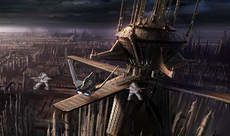
Natasi Daala, director of the SRC has received the message containing the location of the officers that were in serious danger. An emergency medical team was formed instantly and sent to recover the possible survivors of the incident. Half an hour later the medical liner and several other small ships, used for such operations, were in position and begun to search for survivors. Only 9 escape pods were salvaged from the small debris field. The total count of the people found in the pods was 33. Those that were found were sent immediately at the sickbay and procedures to save their lifes were started.
In the hangar bay of the liner, where most pods were carefully placed, the medical team was informed about the arrival of one more. They were shocked to find out the pod was containing 2 survivors, one of which was the fleet admiral himself. How these people were able to enter the pod and yet to receive so much injuries remains unknown but immediate healing procedures were required in order to save the lifes of both of them.
Natasi Daala personally lead the team that begun the temporarry operation on admiral Piett on board of the medical liner, which was on its way back to the capital. Minutes later the liner was in orbit of Planet New London. A medical shuttle, escorted by two Templar very heavy fighters, landed on the isle where The Surgical Reconstruction Center was located. Because of the high level of injuries on the Piett's body and her fear to loose him, Daala ordered the admiral to be transported to "The Sage Tower", where most of the newest medical inventions were about to be used in order to prevent his death.
Rebuilding
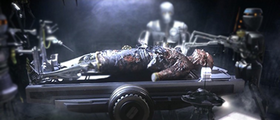
What was the real purpose of "The Sage Tower" remains highly classified. Nevertheless most of the scientists of SRC knew that the newest medical inventions and all prototype suits, build from the "Nano Protection Technologies", were located there under heavy security. The final inventions were used in order to save the life of the fleet admiral, which was still in danger. During the first hours of the operation, most of the Piett's damaged organs were replaced and his multiple injuries - healed. Sadly his torso was covered with many burned areas which were unable to be fixed. The epidermis primary cells were damaged beyond repair. At this stage, the medical team had to inject several hundred Experimental Nano-Bot (AI Control) in his blood stream. These nano-bots were using an advanced AI systems with ability to build cells from scratch. They had to significantly increase the regeneration rate on the standart organic cells and to fix Piett's current and possible future wounds more faster.
After these procedures Piett's life was no more in danger. The team then concentrated on fixing the problem with his lungs, which lead to the future unavailability for a normal breathing. In order to succeed, Daala gave permission one of the prototype suits NPT-VX to be taken for the next operation. This suit was the last model of the "Nano Protection Technologies" project. It had multiple additional equipments: durasteel armor plates - for maximum protection against weapon fire bolts and electricity, life support systems, nanobot injectors - with multiple types for different situations as well as small cloaking generator, mounted on his back - similar to a pillar behind his neck. The helmet was most important for it could allow him to breathe, thanks to the modern life support systems, and to communicate via several devices. Overall this suit was considered to be a masterpiece of the combined modern technology and medicine of 819(A.S.)
The whole operation took six hours to be complete. Natasi Daala and her team have achieved great results - to "reincarnate" a half dead man for a minimum ammout of time. Because of their success, Admiral Piett awarded the 'SRC' by investing more credits in their projects, which possibly in future could save the lifes of not one but many.
VII. Awards and Titles
1.Distinguished Service Cross
- Awarded to Armed Forces personnel for extraordinary service in non-combat roles.
2.Knight Commander of the Order of the Bretonian Empire
- Highest National Honor, awarded by the Queen for extraordinary personal service to Bretonia. Confers upon the holder the honorific "Sir" to be recognized by all Bretonian citizens.
3.National Service Medal
- Awarded to Armed Forces or Bretonian Police personnel or Bretonian citizens who make substantial financial donations to the war effort.
4.Veteran's Badge
- Awarded to Armed Forces Personnel who have served for over 18 months.
5.Distinguished Flying Cross
- Awarded to Armed Forces personnel for exceptional piloting ability.
